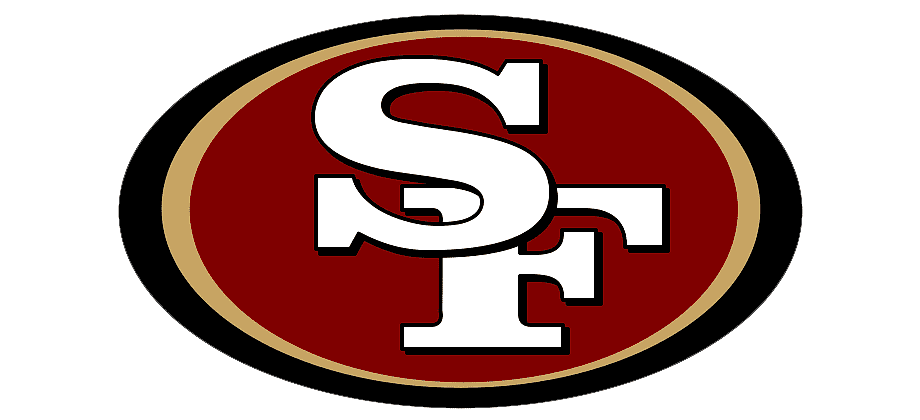From Francis To Floyd: Celebrating The Tradition
 All of us at St. Anthony’s have heavy hearts this week. Our friend and colleague, Fr. Floyd Lotito, OFM, has gone home to God, a few days shy of his 75th birthday. For forty years Floyd’s blood, sweat and tears (and lots of song and laughter as well) have been poured out here at Jones & Golden Gate, in service to God’s favorite people: the poor. This dear, and much loved, Friar personified the ancient, revered tradition we call “Franciscan”, and in his honor, we remember and celebrate that legacy of loving service.
All of us at St. Anthony’s have heavy hearts this week. Our friend and colleague, Fr. Floyd Lotito, OFM, has gone home to God, a few days shy of his 75th birthday. For forty years Floyd’s blood, sweat and tears (and lots of song and laughter as well) have been poured out here at Jones & Golden Gate, in service to God’s favorite people: the poor. This dear, and much loved, Friar personified the ancient, revered tradition we call “Franciscan”, and in his honor, we remember and celebrate that legacy of loving service.
From Assisi to San Francisco
Characters & Chronology
Francesco Bernadone (1181-1226)
The son of a wealthy Italian cloth merchant and his French wife, Francis grew up in the northern Italian town of Assisi. He and his privileged friends were notorious playboys. (Today we’d call them “party animals”.) They lived for the moment. Their adolescence ended when duty called and they donned armor to become knights. Francis was wounded in battle and captured. After a year as a prisoner of war, when his father ransomed him, he was ill – almost dead. Recuperating in Assisi, his body gradually healed, while his troubled soul – having glimpsed the pain and suffering and cruelty of an unjust world – began to search for light. (His vantage point for seeing the world had changed from ultimate insider to extreme outsider.) He started noticing things he’d previously managed to ignore: that his family’s wealth was based on the near-slave labor of his father’s poor workers; that at Sunday Mass the “nice”, respectable worshippers had seats of honor while poor folks stood in the rear. One day, outside the safety of the city walls, he had an encounter with a leper that became the turning point of his life. Francis experienced a call to spend his life embracing lepers”. His involvement with them, and other outsiders”, became a scandal to his parents and the Assisi establishment. In front of the Bishop and the whole town, Francis stripped himself naked, gave his clothes to his father and walked out the city gate to spend the rest of his life with the outsiders. Many thought he was crazy. Some of his former party buddies became convinced of that when curiosity led them to go out and see what he was up to. But some were so moved by what they observed that they joined him and became the first band of brothers (“fratelli” in Italian, transliterated as “friars” in English-speaking countries).
Francis’ band shared his attitude of cortesia, of profound reverence, for all of God’s creation – the earth, sea and sky and all those who dwelt there, but especially for “God’s favorite people”, the poor.
300 years before the Protestant Reformation, the witness of Francis and his followers caused a major transformation in the lives of many European Christians. Just two years after his death, Francis was declared a “saint” and his followers became known as Franciscans. Today there are Franciscans in more than 110 countries. Some of them are in the city named after him, San Francisco, California.
Chiara Favarone (1194-1253)
We know her as “St. Clare”, the founder of a religious order of women known as “Poor Clares”. (Santa Clara, California is named after her.) Francis knew her first as a wealthy teenager, born to privilege, yet passionate about the plight of poor and neglected folks outside Assisi’s walls. At age 18 she chose to set aside her riches and live in voluntary poverty. Clare and Francis became soul mates – encouraging, inspiring and defending each other. After Francis died she was the one who challenged his fratelli to keep his vision alive.
Fernando Buglioni (1195-1231)
Six years before Francis died, a priest from Portugal came to Assisi and joined the band of brothers. He changed his name to Anthony and became an ardent Franciscan. Even though he was a gifted preacher, he took to heart Francis’ advice: “Preach the gospel always, and, if you must, use words!” Anthony was passionate about poor people victimized by injustice and became legendary for feeding people, which is why he is usually portrayed holding a loaf of bread. (Various Catholic ethnic groups still celebrate his memory by baking “St. Anthony’s Bread”.)
+++++++++++++++++++++++++++++++++++++++++++++++++++++++
1776
In the same year that Thomas Jefferson and friends were creating the Declaration of Independence in Philadelphia, the first Franciscans arrived in northern California. For some years before that, Spanish soldiers, led by Juan Bautista de Anza, had been moving up the Pacific Coast from Baja California, colonizing Mexico for the Spanish regime. (Most of California was still part of Mexico at that time.) Traveling with them were Spanish Franciscans, led by Junipero Serra. At regular intervals the soldiers would create a fortress (a presidio) and somewhere nearby the friars would start a mission. In years to come, towns and cities developed around those military and religious outposts, usually taking the name of the mission church. In 1776 they reached “the Bay Area”, creating sites at San Jose, Santa Clara and San Francisco. The area where the Golden Gate Bridge begins is still known as “the Presidio”. It went from being a Spanish fort to an American Army fort, and then a national park. Mission San Francisco de Asis is in a neighborhood we still refer to as The Mission district. (When the city got subdivided into blocks and streets, the mission ended up facing Dolores Street. Over the years people got in the habit of saying they were going to the Mission on Dolores Street, and, eventually it became known, simply, as Mission Dolores.)
1849
When prospectors discovered gold at Sutter’s Creek, nearby San Francisco changed forever. What had been a fairly sleepy, little port town, quickly became a bustling, thriving, raucous and wild city.
1849-1861
In the dozen years following the discovery of gold at Sutter’s Mill, several things happened: California became the newest American state (this was no longer Mexico), downtown San Francisco took shape, including a distinct neighborhood which eventually became known as “The Tenderloin”, and the newest state sided with the Union as the nation plunged into Civil War. The Tenderloin was a German immigrant community, mostly single males, working hard to send money home to relatives or to create a nest egg for a homestead here. Franciscan friars created a parish community to serve these new Americans, naming it after Germany’s patron saint, St. Boniface.
1906
Six years after St. Boniface Parish built their impressive, new church building, the great San Francisco earthquake and fire destroyed virtually the entire city. (The quake broke open the gas mains, starting the fires, but also broke the water mains, removing the water pressure needed to fight the fires. Most of the city burnt.)
Only a few stone buildings in this neighborhood survived, including the church. Its German-American parishioners became an essential part of the work force that rebuilt the city, including the residential hotels that came to characterize The Tenderloin.
1950
By mid-century, The Tenderloin had got the reputation as one of San Francisco’s bleaker neighborhoods. Some of the SROs (single room occupant hotels) had become ‘flop houses’ for people, mostly men, who’d fallen on hard times. During the 1940s, the friars at St. Boniface had stopped giving out food at the friary (rectory) door, distributing certificates, instead, that hungry neighbors could use at nearby restaurants. But some of those establishments demeaned the people with certificates, treating them differently from their regular customers, often forcing them to wait at the kitchen door for food. The church’s new pastor, Fr. Alfred Boeddeker, realized that something else had changed as well – the parish staff had “lost their contact” with their poor flock. So funds were raised, and the building on the southwest corner of Golden Gate Avenue and Jones Street, especially its basement auto repair garage, was transformed into St. Anthony’s Dining Room. In the spirit of St. Francis (“ … if you must, use words”) Fr. Alfred insisted the place be called St. Anthony’s FREE Dining Room, to indicate not only that a meal didn’t cost anything, but also that the place was to be free of proselytizing.
2009
Since St. Francis Day (October 4th) in 1950, when the Dining Room doors opened for the first time, more than 35,000,000 meals have been served. The love and compassion flowing through that space has given life to other ventures as well: a free medical clinic, a free clothing and house waresprogram, outreach and support services for seniors, a social work center, a housing complex for senior women, a residential drug and alcohol rehabilitation program, a computer tech lab, employment program and learning center, justice education, volunteer, intern and advocacy programs.
Those are impressive, even dramatic, developments. But the family of friars, staff, volunteers and guests at St. Anthony’s recognize that all those projects – all that labor and all that service – are missing something essential if not done in the spirit of Francis and Clare and Anthony: treating our poor and homeless neighbors with dignity and respect. That loving, dignified and respectful service is the vital link between 13th century Assisi and 21st century San Francisco.













































